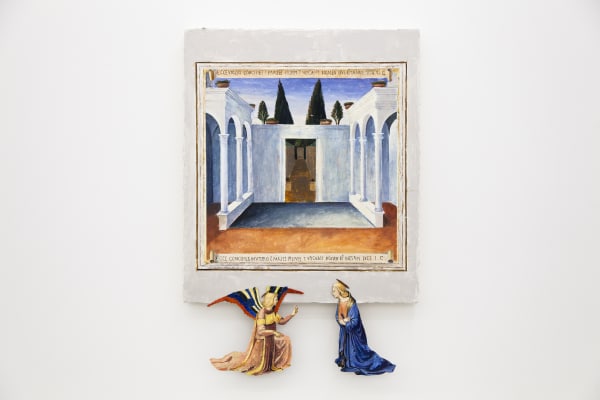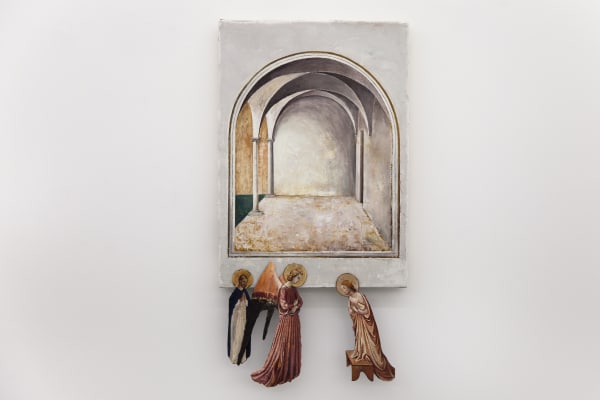André Griffo: To whom should I pay my indulgence?
Galeria Athena is pleased to present To whom should I pay my indulgence?, by André Griffo.
Result of André Griffo’s research relating social issues with the History of Art and Architecture, the exhibition comprises ten new paintings that occupy the entire space of the gallery. The works point out Griffo’s interest in the appropriation of spaces which, although not identifiable at first glance, are created and impregnated with contemporary elements that speak about the social and religious structure, recent political events and, in particular, historically consolidated values.
Inhabited places, passages or even iconic paintings of the History of Western Art become an open scenario that can be pictorially recreated by the artist and recontextualized to the current cunjuncture. Following this methodology, six large paintings are arranged in the Cubo Room. The power and the glory of the sin, Maybe it’s worth relying on luck, There’s dirt underneath the dirt, The end beffiting the beginning I and II and To whow should I pay my indulgence? are titles of the works that refer to the approach chosen by the artist: themes are part of a religious liturgy that acquired a critical and questioning character in this exhibition.
To whom should I pay my indulgence? is the question-title of the exhibition and of one of the paintings. During the Middle Ages, the Catholic Church, which held enormous political and economic power, became known for selling indulgences, that is, it granted heavenly redemption of sins for anyone that could afford it. Bringing that to the current context, the artist poses a question about those other institutions or individuals to whom we are indebted and to which social powers and controls we are submitted every day. To this end, André Griffo resignifies places impregnated by the passing of time by adding contemporary signs and symbols to them that highlight everyday issues. Attributes of public safety and violence appear, such as the coat of arms of the Military Police and wrists holding a gun; religious symbols, like oratories and images of shepherds; prostitution signs, with ads stuck to the walls; among other types of icons related to the current reality.
In the Casa Room, however, are four paintings from the Empty Annunciation series, a reinterpretation of the traditional frescoes of the Annunciation painted by the renaissance artist Fra Angelico. Here, André Griffo proposes the representation of classical renaissance spaces without the presence of the original characters. As they are known, Annunciations tell the story of the angel Gabriel at the moment he reveals to Mary that she was the chosen one to be the mother of Christ. When suppressing the characters, the empty space drives the public’s attention to architecture. On the other hand, the title of the work praises the key element of this series: the assimilation of the empty Annunciation that brings up the belief in the existence of a superior power or principle based on an imaginary narration.
To avoid confrontations and comparisons with different moments of our history, as well as to bring deeply rooted values to light, the works allow the exposure of the thoughts of people from a given society, their values and changes, and, in certain occasions, for the witnessing of the immutability of things.











